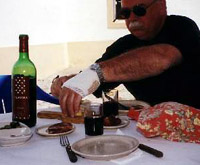
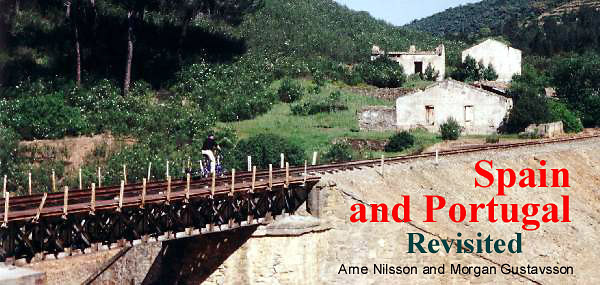

Entering an abandoned village in Spain along the Rio Tinto. The railroad was shut down in the 1960s. Gauge is 1000 millimeters (1 meter).

Morgan and I were in Spain & Portugal the last week of April. We took some photos that you may want to use in the future. In short, we flew to Malaga in Southern Spain and rented a car. We drove around and biked for a full week in southwest Spain and southeast Portugal. All the plants seemed to be in blossom, and we had a great time. These are wonderful countries to visit even without
railbikes.


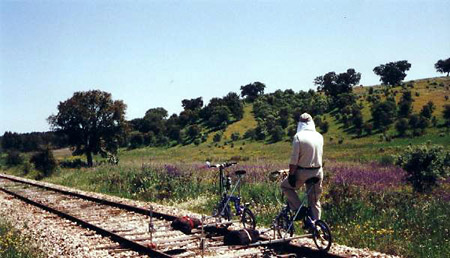
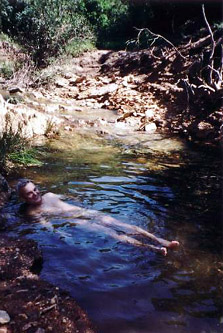
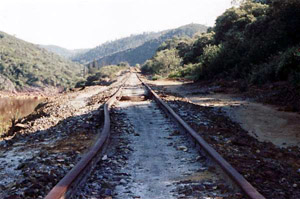
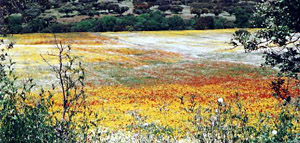
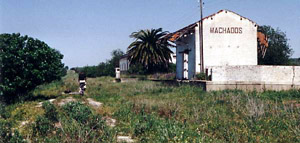
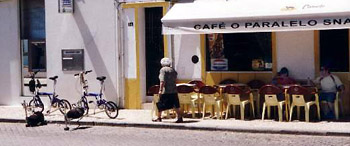
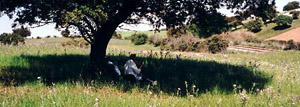
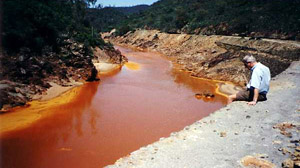


Click here to add your text.
Morgan had a derailment (mechanical failure) and injured in his hand (8 stitches). He is all recovered and says he enjoys having a scar with such an unusual background. Something to one day brag about at the Home for the Aged.

Above and right:
Scenes in Portugal.
Gauge is 1640 mm
(so-called
Iberian wide gauge).
Right: Rail bent from heat. We encountered several of these which
caused a couple of derailments. Below:
Overheated railbiker cools off in a creek
leading into the Rio Tinto.
Right: The station in Machados, Portugal, is about
1 kilometer from the town and
connected to the village by a paving-stone road.
Right: Parked in
downtown Sousel, Portugal for a cold drink.
Below and Right: Lunch under a spreading shade tree and a temporarily disabled railbiker gets a remedy at a village restaurant in Portugal.
Above: Note the gates at the intersection. They were manually operated to block road traffic from approaching trains. This location is
in Santa Susana, Portugal. Right:
The Rio Tinto - imagine it were Vino Tinto! The red coloring is the result
of local iron mining.
Above: We stop to watch turtles in a small pond in Portugal. Left: Switch in
Sousel, Portugal.
The mechanism is inboard
the rails which is normal in
Europe but this one also had
a leaf-spring. Exactly how it
operated is a question.